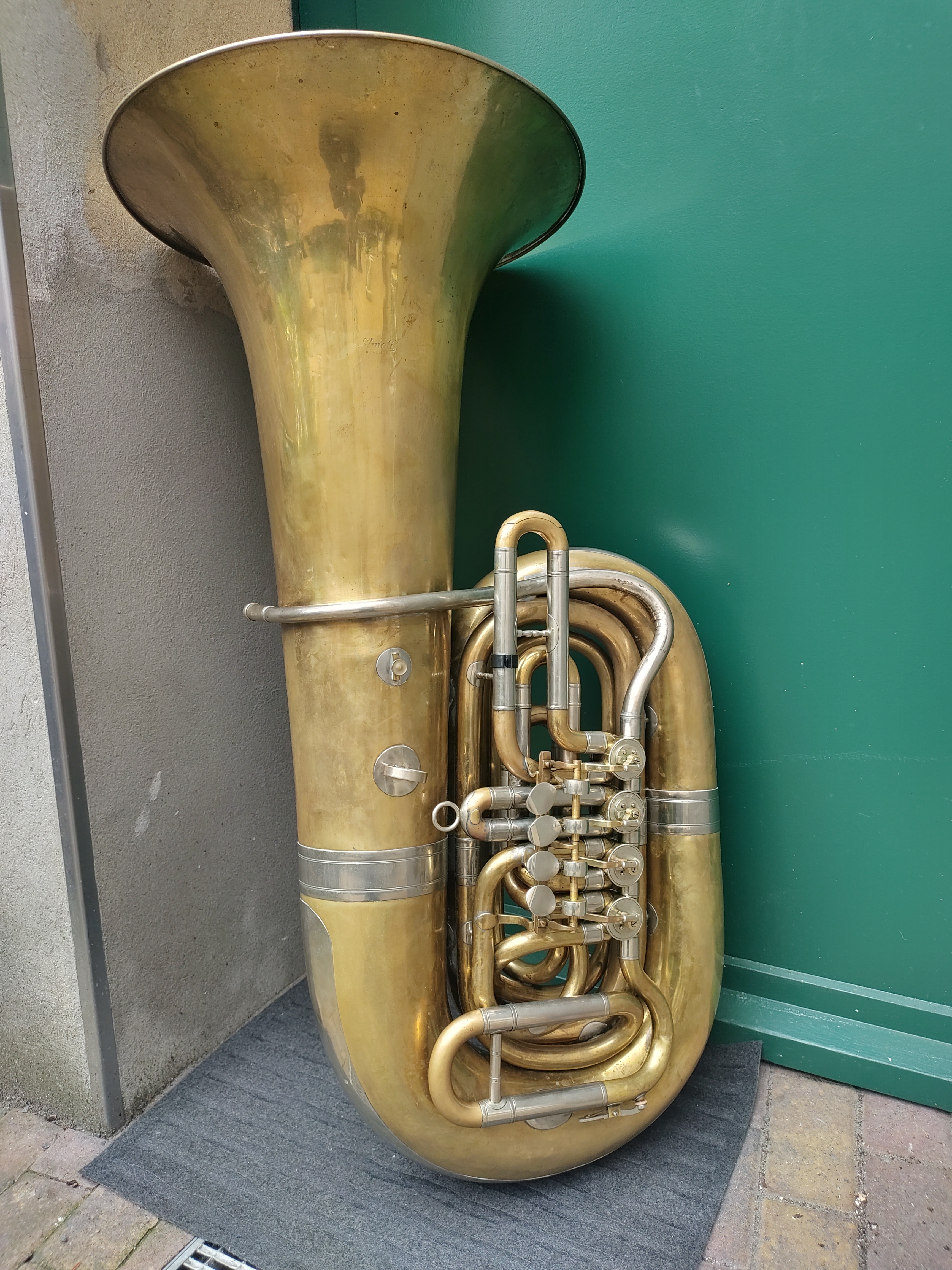
Brass and Pipes blog: ca. 1940 B&F/Amati Kaiser
Forum rules
This section is for posts that are directly related to performance, performers, or equipment. Social issues are allowed, as long as they are directly related to those categories. If you see a post that you cannot respond to with respect and courtesy, we ask that you do not respond at all.
This section is for posts that are directly related to performance, performers, or equipment. Social issues are allowed, as long as they are directly related to those categories. If you see a post that you cannot respond to with respect and courtesy, we ask that you do not respond at all.
- LeMark
- Site Admin
- Posts: 2838
- Joined: Wed Aug 12, 2020 8:03 am
- Location: Arlington TX
- Has thanked: 77 times
- Been thanked: 821 times
Re: Brass and Pipes blog: ca. 1940 B&F/Amati Kaiser
that's cool. You can see clearly how that horn would eventually become the Miraphone 186.
Yep, I'm Mark
- bloke
- Mid South Music
- Posts: 19372
- Joined: Thu Aug 13, 2020 8:55 am
- Location: western Tennessee - near Memphis
- Has thanked: 3858 times
- Been thanked: 4119 times
Re: Brass and Pipes blog: ca. 1940 B&F/Amati Kaiser
comment on one remark and a small part of the main picture:
Though obviously replaced - and the last curve into the #1 casing not being as sharp as the original - that's not all that bad of a mouthpipe bending job, particularly since the person who did it probably did it "free-handed", in additional to the fact that nickel silver is considerably stiffer metal than yellow brass. Further, the large end of a tuba mouthpipe (regardless of the material) is much more difficult to bend "nicely" than is the rest of a tuba mouthpipe.
That inside curve (physics/mechanics) is going to be considerably thicker than the outside curve, and the ugliness/ruts could likely be filed and sanded away- still leaving plenty of material - possibly as much as on the outside curve.
Rotary instruments that old - with original rotors that are not rebuilt nor replaced, YET "good" - are rare.
I have such an instrument here (something special, and intentionally being vague to avoid private messages) with astonishingly NOT-worn rotors (age: approx. 160). I would love to conclude its repair and offer it for sale (special market) but I've accepted a few more repair jobs than I should have (being that times have been quite uncertain).
(Assuming only approx. .5mm thick sheet metal) instruments that thin and that large - which are free of patches - are also rare.
Though obviously replaced - and the last curve into the #1 casing not being as sharp as the original - that's not all that bad of a mouthpipe bending job, particularly since the person who did it probably did it "free-handed", in additional to the fact that nickel silver is considerably stiffer metal than yellow brass. Further, the large end of a tuba mouthpipe (regardless of the material) is much more difficult to bend "nicely" than is the rest of a tuba mouthpipe.
That inside curve (physics/mechanics) is going to be considerably thicker than the outside curve, and the ugliness/ruts could likely be filed and sanded away- still leaving plenty of material - possibly as much as on the outside curve.
Rotary instruments that old - with original rotors that are not rebuilt nor replaced, YET "good" - are rare.
I have such an instrument here (something special, and intentionally being vague to avoid private messages) with astonishingly NOT-worn rotors (age: approx. 160). I would love to conclude its repair and offer it for sale (special market) but I've accepted a few more repair jobs than I should have (being that times have been quite uncertain).
(Assuming only approx. .5mm thick sheet metal) instruments that thin and that large - which are free of patches - are also rare.
